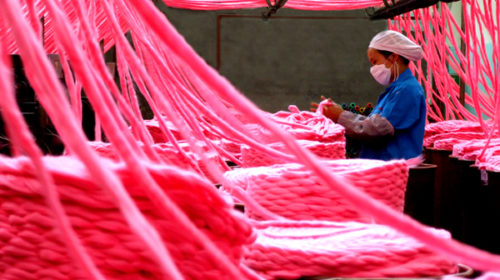Bioplastic Textiles Market to Surge at 6.60% CAGR, which is anticipated to reach USD 2.09 billion by 2030
Bioplastic Textiles Market –Global Analysis of Market Size, Share & Trends for 2019 – 2020 and Forecasts to 2030 is anticipated to reach USD 2.09 billion by 2030. According to this report, strong growth in the Bioplastic Textiles Market is expected in all developed geographic markets, supported by consumer tendencies towards sustainable products. The urgent need to contain CO2 emissions by reducing reliance on fossil fuels is likely to fuel demand over the forecast period (2021-2031). Technological developments have made bioplastics compatible and easy to use, making them a potential alternative source for end-use, as well as the increasing spread of the bioplastic product in fabrics and home textiles, as well as growing government initiatives for the use of environmentally friendly products. Use of bioplastics is gaining in importance worldwide, which will drive the growth of the Bioplastic Textiles Market. The massive use of the product in fabrics and home textiles will drive the growth of the Bioplastic Textiles Market.
The market report on Bioplastic Textiles Market includes in-depth insights as:
- The estimated value of the market was USD 1.00 billion in the year 2020.
- Bioplastic Textiles in Europe held the largest market share in the year 2020.
- Based on, Material, Polylactic Acid, emerged as a key segment in the Bioplastic Textiles market.
- Based on Source, Corn Starch emerged as a key segment in the Bioplastic Textiles market.
- Key players are likely to focus on product innovations and expansion through mergers to retain their positions in developed markets.
“Continuous innovations and further developments in the Global Bioplastic Textiles Market to develop new materials with improved properties and new functionalities are driving the Global Bioplastic Textiles Market. The high level of customer acceptance is an external factor driving the Global Bioplastic Textiles Market. In addition, the effects of climate change, led by pollution and CO2 emissions, as well as rising fossil fuel prices, are driving the oppressive demand for bioplastic textiles around the world”, according to this report
Bioplastics are plastics materials made from renewable biomass sources, such as vegetable fats and oils, corn starch, straw, wood chips, sawdust, recycled food waste, etc. containers) through the use of microorganisms. Bioplastics are generally made from sugar derivatives, including starch, cellulose, and lactic acid. Common plastics such as fossil-fuel plastics (also known as petroleum-based polymers) are made from petroleum or natural gas. In the petrochemical industry, bioplastics are attractive because they are biodegradable. Not all bioplastics are biodegradable or more easily biodegradable than base plastics made from fossil fuels. Bioplastics are used for single-use items such as containers, dishes, cutlery, pots, bowls, and straws. There are few commercial applications for bioplastics, and cost and performance remain problematic.
The Bioplastic Textiles Market is segmented By Material into Bio-Polyester, Polyhydroxyalkanoate, Polylactic Acid, Polyhydroxy Butyrate, and Bio-Polyamide. The Polylactic Acid segment is expected to drive Bioplastic Textiles Market growth owing to the maximum share of about 30%. Moreover, PLA has properties similar to polystyrene and polyethylene, making it a potential replacement to boost the Global Bioplastic Textiles Market.
Key Players in the Market
- Some of the key players operating in the Bioplastic Textiles Market are Natureworks LLC, Novamont S.p.A., Braskem, Lacoste, Gucci, Puma, Unitika, BASF SE, DuPont de Nemours, Inc., FKuR Biome Bioplastics
Get Valuable Insights into Bioplastic Textiles Market.
In the new report, CRI Report thrives to present an unbiased analysis of the Bioplastic Textiles Market that covers the historical demand data as well as the forecast figures for the period, i.e., 2021-2030. The study includes compelling insights into growth that is witnessed in the market. Bioplastic Textiles market is segmented By Material into Bio-Polyester, Polyhydroxyalkanoate, Polylactic Acid, Polyhydroxy Butyrate, and Bio-Polyamide; By Source into Corn Starch, Cassava, Sugarcane, and Beet; By End-User into Footwear, Clothing, and Home Textiles. Geographically, the market is segmented into North America, Latin America, Europe, Asia Pacific, and Middle East, and Africa.




